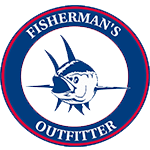Scottish Crew Scores Big!
September 26, 2013Items to add to your fishing trip checklist
October 4, 2013Finding the perfect sized fishing hook can be quite an ordeal. Classifications of hooks can look confusing to the most skilled of fishermen, with hooks that have similar numbers associated with them looking very different. So how do you know what to choose, and where to start?
First off, get to know the ins and outs of fishing hook sizes. An easy way to think about hook sizes is remembering that there are really two different systems for classifying them. One involves the “#” symbol, and the other involves a “/” symbol. When talking about the # classification, you would refer to it as a “number two hook,” whereas for the / grouping you would ask for an “ought,” – so 2 ought, 3 ought, etc. Both of these naming conventions start at 1 (there is no zero size) and increase numerically. So … #1, #2, #3 … and 1/0, 2/0, 3/0, etc.
Getting Over Some Confusion About Hook Sizes
Here’s where things get a bit confusing: The “#” grouping gets smaller in size as the numbers go up, and the / grouping gets larger. So, by this logic, a #2 hook will be smaller than a 2/0 hook, and so on.
Seems somewhat easy to remember, right? Well, there are a few more things to keep in mind that can throw you off when hunting for the perfect hook. Another tricky thing about hook sizing is the variables within the number classification itself. A #2 hook, for example, can vary from brand to brand, making no #2’s exactly alike. The number where each hook gets its name is derived from the distance between the shank and the point, but, as mentioned earlier, this can be different depending on the brand and style of hook. Similarly, there is no perfect hook size for a specific type of fish. Of course there are some basic guidelines. For example, if you are fishing for shark, you definitely want to go with a big hook, like a 20/0, but, as with most aspects of fishing, it’s all up to you, how you like to fish, and what gets you the best results.
When shopping for hooks, keep in mind that #’s go down, /’s go up, and that variation is everywhere. Since hooks are fairly inexpensive in price, buy a few that look like what you may need, and test them out on the water. That is the best way to test your knowledge of hook sizes and find what works best for you.
Photo credit: Debbi Long / Foter / CC BY-NC-SA
